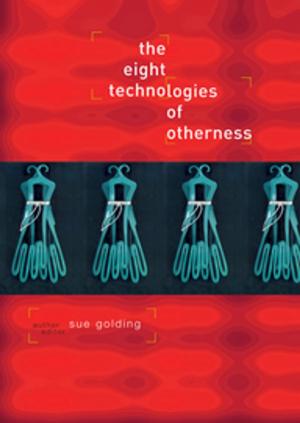Femininity, Self-harm and Eating Disorders in Japan
Navigating contradiction in narrative and visual culture
Fiction & Literature, Literary Theory & Criticism, Asian, Far Eastern, Nonfiction, Social & Cultural Studies, Social Science, Cultural Studies, Ethnic Studies, Gender Studies, Women&| Author: | Gitte Marianne Hansen | ISBN: | 9781317444381 |
| Publisher: | Taylor and Francis | Publication: | December 22, 2015 |
| Imprint: | Routledge | Language: | English |
| Author: | Gitte Marianne Hansen |
| ISBN: | 9781317444381 |
| Publisher: | Taylor and Francis |
| Publication: | December 22, 2015 |
| Imprint: | Routledge |
| Language: | English |
From the 1980s onwards, the incidence of eating disorders and self-harm has increased among Japanese women, who report receiving mixed messages about how to be women. Mirroring this, women’s self-directed violence has increasingly been thematised in diverse Japanese narrative and visual culture.
This book examines the relationship between normative femininity and women’s self-directed violence in contemporary Japanese culture. To theoretically define the complexities that constitute normativity, the book develops the concept of ‘contradictive femininity’ and shows how in Japanese culture, women’s paradoxical roles are thematised through three character construction techniques, broadly derived from the doppelgänger motif. It then demonstrates how eating disorders and self-harm are included in normative femininity and suggests that such self-directed violence can be interpreted as coping strategies to overcome feelings of fragmentation related to contradictive femininity. Looking at novels, artwork, manga, anime, TV dramas and news stories, the book analyses both globally well known Japanese culture such as Murakami Haruki’s literary works and Miyazaki Hayao’s animation, as well as culture unavailable to non-Japanese readers. The aim of juxtaposing such diverse narrative and visual culture is to map common storylines and thematisation techniques about normative femininity, self-harm and eating disorders. Furthermore, it shows how women’s private struggles with their own bodies have become public discourse available for consumption as entertainment and lifestyle products.
Highly interdisciplinary, it will be of huge interest to students and scholars of Japanese studies, Japanese culture and society and gender and women's studies, as well as to academics and consumers of Japanese literature, manga and animation.
From the 1980s onwards, the incidence of eating disorders and self-harm has increased among Japanese women, who report receiving mixed messages about how to be women. Mirroring this, women’s self-directed violence has increasingly been thematised in diverse Japanese narrative and visual culture.
This book examines the relationship between normative femininity and women’s self-directed violence in contemporary Japanese culture. To theoretically define the complexities that constitute normativity, the book develops the concept of ‘contradictive femininity’ and shows how in Japanese culture, women’s paradoxical roles are thematised through three character construction techniques, broadly derived from the doppelgänger motif. It then demonstrates how eating disorders and self-harm are included in normative femininity and suggests that such self-directed violence can be interpreted as coping strategies to overcome feelings of fragmentation related to contradictive femininity. Looking at novels, artwork, manga, anime, TV dramas and news stories, the book analyses both globally well known Japanese culture such as Murakami Haruki’s literary works and Miyazaki Hayao’s animation, as well as culture unavailable to non-Japanese readers. The aim of juxtaposing such diverse narrative and visual culture is to map common storylines and thematisation techniques about normative femininity, self-harm and eating disorders. Furthermore, it shows how women’s private struggles with their own bodies have become public discourse available for consumption as entertainment and lifestyle products.
Highly interdisciplinary, it will be of huge interest to students and scholars of Japanese studies, Japanese culture and society and gender and women's studies, as well as to academics and consumers of Japanese literature, manga and animation.















